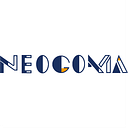The future of advertising you couldn’t predict — written by completely non ads experts
Facebook acquired Scape technology and Mapillary, Snap went for ArielAR and Pixel8earth. Why? Because both FB and Snap drive most of their revenue from ads and understand where their industry is heading to.
Seeing more and more of our friends (or sometimes competitors^^) getting acquired reinforced our vision toward geolocalized AR. We might not have any advertising legitimacy, but we’re spatial computing experts. You probably heard about Augmented or Mixed reality, spatial computing is the underlying technology that makes those experiences possible. It’s sometimes referred to as world-scale AR, AR cloud, Meta or Multiverse, every tech giant is calling it differently but it boils down to the same thing. It usually leverages computer vision and machine learning models to obtain a phone’s accurate position without relying on a physical infrastructure (i.e. no hardware emitters to install). After the phone is precisely positioned, 3D content can become anchored, persistent, occluded and scaled at a building, street or city level. How does that have to deal with advertising, communication and marketing generally speaking?
Long-term trend: digital takes over traditional
Online advertising is not as old as the internet, but grew along with it, especially in the early 2000s. In 20 years, digital went from representing less than 3% of total marketing budgets to now more than half. Digital has now grown bigger than offline, traditional spending. This spectacular rise is quite simple to understand: the former one can measure, track, analyze while the latter relies on estimations or intuitions. Any rational marketer or business owner would want to know where marketing budgets went and how effective those campaigns are. Digital also allows personalized messages, target different audiences and make ads more dynamic — think videos vs prints.
The accelerator: COVID, of course
Mobile is the first touchpoint for advertisers, given about half of users check their social media platforms before even getting out of bed. With extended and repetitive lockdowns all over the planet, phones are becoming one of the only channels still available. This has huge implications for brands, having now only 5.85 inches to present their products and deliver their sales pitch to captivate attention. Advertisers evolve in an ultracompetitive online world with increasing users but decreasing attention time, engagement and ultimately ROI.
The most innovative brands understand this ruthless competition, for example on google ads and social media platforms, so rather than trying to outspend their competitors, some are turning to new channels such as virtual worlds, the biggest ones being games. Gucci is probably one of the most advanced companies when it comes to leverage new technologies and platforms. They’ve already incorporated AR, VR and games into their app and now explore NFTs and virtual worlds (Decentraland, sandbox, etc) where players can buy digital clothes and accessories. New platforms such as Admix are helping brands and advertisers to reach those virtual visitors (as JCdecaux used to help them when billboards and bus stop were the main public spaces).
Our prediction: digital ads sitting on the top of our physical world
Let’s summarize: slightly more than half of marketing budgets go online, rest is still spent on traditional channels. Since spatial computing is merging online and offline channels, it could become a serious challenger for both offline and online advertising companies.
World-scale AR is therefore offering a completely new way for brands to reach, engage and convert users. As with the Internet and mobile, it won’t be done in a day. Yet the fact that FB, Google, Snap, Twitter or even eCommerce giants are actively investing or acquiring spatial computing startups means they are trying to keep their oligopolistic positions over the next technological paradigm.
- This wave makes ads not only contextual but context-aware, as your phone understands its surroundings even better than you.
- It’s better than omnichannel as brands are getting the best of both online and offline.
- AR is a world where UGC is king. Brands are only providing tools for end-users, the entire advertising concept is shifting toward human creativity.
Concretely how do advertisers leverage spatial computing?
Few simple steps: map, update, train and augment your physical worlds. From a native app or a computer web browser, nothing else is needed!
Mapping no longer refers to a complicated process restricted to experts (urban planners, interior designers or architects). Anyone can start mapping with an ARkit/ARcore ready device (Neogoma’s public demo app is available here), professionals can even use drones and robots.
Few minutes after the mapping, the magic starts to happen (both on the phone and our web editor). The relocation model, basically algorithms that are the backbone of visual positioning technologies, is being trained so that any phone will be able to re-positioned itself in this mapped space, ultra-accurately, usually within 30cm. In parallel, SFM algorithms are reconstructing a 3D point cloud from single RGB pictures, allowing marketers and advertisers to drag and drop content. According to our experience, we highly recommend that this content should be tools for users to create their own content, or branded experiences like games. On the other hand, it can also be a simple 3D model of the latest sport shoe from Nike, Converse or… Gucci again! (see some examples on Sketchfab, the leading platform for 3D content).
